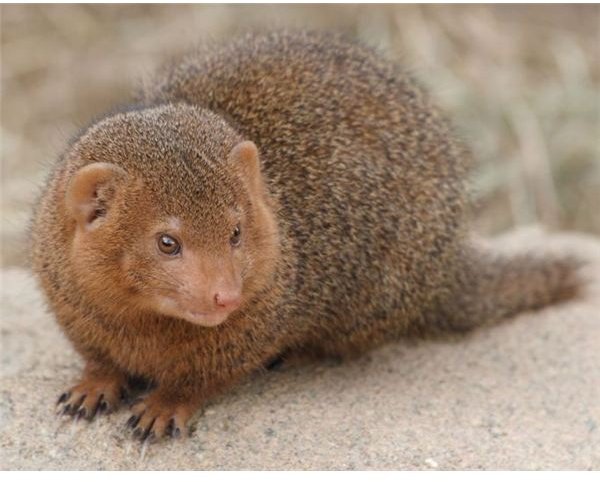Information on the Mongoose Animal: Fun & Interesting Facts About the Mongoose
The Mongoose
The mongoose is a small rodent-like animal (mammal) found naturally in most parts of Africa and in parts of southern Asia and Europe. The ancient Egyptians domesticated these wild creatures and considered them sacred (mummified bodies have been discovered in tombs). Below is more interesting facts and information on the mongoose.
Description
There are about 30 different species of mongooses.
The typical mongoose is similar to the weasel. They have a pointed face, a long and slender body (7-25 inches long), short legs, and bushy tails (6-21 inches long, about the same length of the body). They weigh between 12 ounces to 11 pounds. Their fur is coarse and the color is brown or gray. Some species have striped fur or ringed tails.
Habitat
The mongoose is mainly a terrestrial mammal, meaning they live on land, but some species have adapted to living in tree tops or partially in water. On land, they live in burrows (either abandoned ones or ones they dig themselves), holes, or rock crevices.
Behavior

Some mongoose species are solitary animals and will fend for themselves. Others will work together as a team.
The mongoose is famous for boldly attacking deadly snakes like the cobra. Not all species will do this. The mongoose will provoke the snake to strike repeatedly while it dodges the blows. Eventually, the snake will become exhausted and the mongoose will kill it by crushing its skull. This remarkable skill is learned. Many young mongooses have lost their life due to snakebites.
Diet
The mongoose is an omnivore, meaning it will eat both animals and plants. Their diet includes small animals (such as birds, rodents, insects, frogs, and worms), nuts and seeds, and fruits. They are also known to eat bird eggs by throwing them against something to break them open.
Reproduction
The female mongoose gives birth once a year to a litter of about 4 pups. At 6 weeks of age, the pups are weaned and will begin foraging with their mother until about the age of 4 months. Males will leave the family when they are about 6 months old and the females will stay longer or even permanently.
More Facts
The following is more interesting information on the mongoose:
• In the 1800s, the mongoose was introduced to some islands (in Hawaii and the West Indies) to help control rodent populations. This was later to be found as a mistake because the mongoose threatened various native animals, particularly birds. Because of this, it is illegal to import a mongoose into the United States.
• Mongooses are unaffected by snake venom.
• The average life span of a mongoose is 15-20 years in captivity and 7-12 years in the wild.
Sources Used
https://animals.nationalgeographic.com/animals/mammals/mongoose.html
https://www.encyclopedia.com/topic/mongoose.aspx
Photo Credit
Common Dwarf Mongoose image by MiikaS (CC/flickr)
Mongoose and Cobra image courtesy of General Douglas Hamilton, 1892
